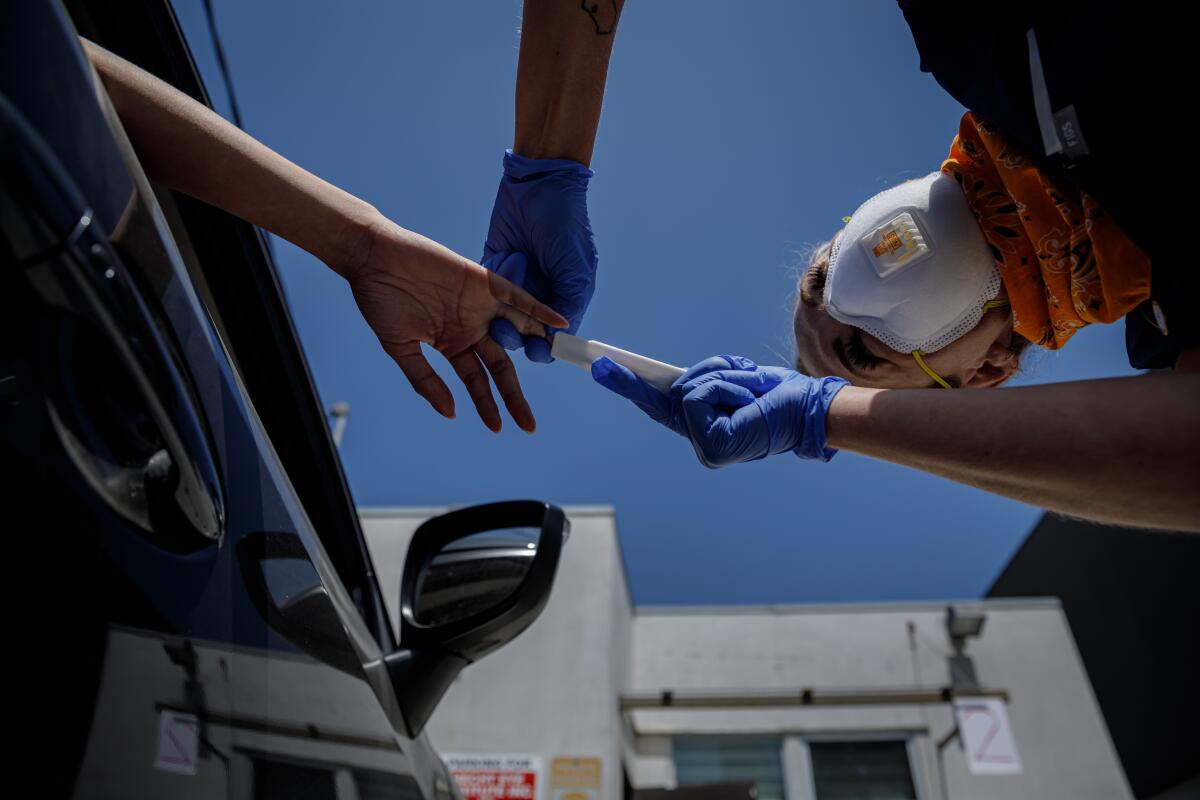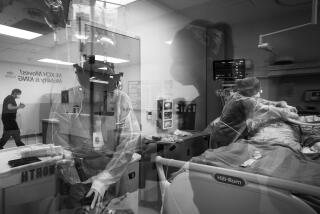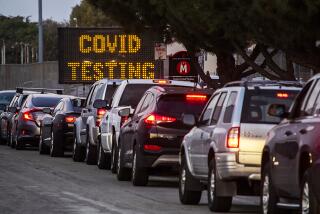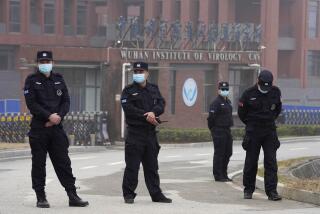Pandemic’s reach far outstripped official coronavirus case counts, study suggests

A new study that looks at the presence of coronavirus antibodies in nearly 62,000 life insurance applicants found that before the devastating holiday surge, the number of asymptomatic or undiagnosed coronavirus infections in the U.S. may have been twice as high as the official tally of cases overall.
The findings, published Tuesday in the journal JAMA Network Open, indicate that there were millions more asymptomatic and undiagnosed people than experts had realized — and suggests the pandemic could have been far more pervasive than it first appeared.
“The overall number of SARS-CoV-2 infections in the U.S. may be substantially higher than estimates based on public health case reporting,” the study authors wrote.
When it infects human hosts, SARS-CoV-2 can cause moderate to severe cases of COVID-19. In the U.S. alone, it has resulted in more than 536,000 deaths. But in many people, an infection can come and go while causing minimal or no discernible symptoms.
That may be a good thing for those individuals, but it’s dangerous for communities, through which the virus can spread undetected. Indeed, a modeling study in January determined that asymptomatic individuals are responsible for more than half of coronavirus transmission.
But those who have beaten back a coronavirus infection should have antibodies to the virus in their blood — even if they didn’t know they were infected.
“Understanding … the actual prevalence of antibodies in the community would be helpful in understanding the likelihood of us continuing to have outbreaks,” said Dr. Sara Keller, an infectious disease physician at Johns Hopkins University School of Medicine who was not involved in either study.
Patients see surgeons who wear clear masks instead of regular ones as being more empathetic and trustworthy and having better communication skills.
Researchers have long suspected that the official coronavirus case totals were an undercount of the true number.
To try to see whether that was indeed the case, two researchers from Clinical Reference Laboratory Inc. in Lenexa, Kan., tested blood samples provided by 61,910 life insurance applicants to look for the presence of antibodies to SARS-CoV-2. They recorded each applicant’s age, sex, state of residence and antibody status; all other personal data were scrubbed.
All of the applicants reported that they were healthy when they provided the blood samples. But in 4,094 of the 61,910 cases, the researchers found evidence of a past coronavirus infection in the form of antibodies.
Then the researchers used 2019 census data estimates to scale up the resulting antibody-positive rates for the entire country. They did a state-by-state analysis using the antibody results for life insurance applicants from each state.
Their results suggest that the proportion of people who had coronavirus antibodies varied greatly among the states. New York had the highest rate, at 14.4%, followed by Louisiana at 12% and Nevada at 10%. At the other end of the spectrum, the antibody prevalence rate was 0% in Alaska, 0.6% in Maine, 1.4% in Oregon, 1.8% in Hawaii and 1.9% in New Mexico.
Overall, the team estimated that 15.9 million asymptomatic or undiagnosed SARS-CoV-2 infections had taken place in the U.S. as of Sept. 30. At the time, the CDC reported a total of about 7.2 million cases.
“Our estimate implied more than twice the number of infections than cases reported to Centers for Disease Control and Prevention, suggesting a more widespread pandemic,” the study authors wrote.
Keller said she suspects the true number was “probably even higher” than that.
As more Americans line up for COVID-19 vaccines, children have been excluded. But that is expected to change by the fall, Dr. Anthony Fauci says.
Kaitlyn Sadtler, an immunologist and bioengineer at the National Institutes of Health who was not involved in the study, conducted an analysis with colleagues suggesting that by July 2020, there were 4.8 undiagnosed coronavirus infections for every diagnosed case. They also estimated that about half of those who had not been diagnosed with a coronavirus infection had reported feeling sick since January 2020, the outbreak’s early days.
Sadtler pointed out that the new study looks at antibodies against the virus’ nucleocapsid, which wanes faster than antibodies that target the virus’ spike protein. Because of this, “it is important to consider that this may be missing some early infections whose anti-nucleocapsid antibodies had already faded,” she said.
Regardless, she added, it’s crucial to look for ways to identify infections that may have been missed.
It’s “great to see more studies like this coming out that allow us to truly understand the extent of the spread of the pandemic in the U.S.,” she said.







